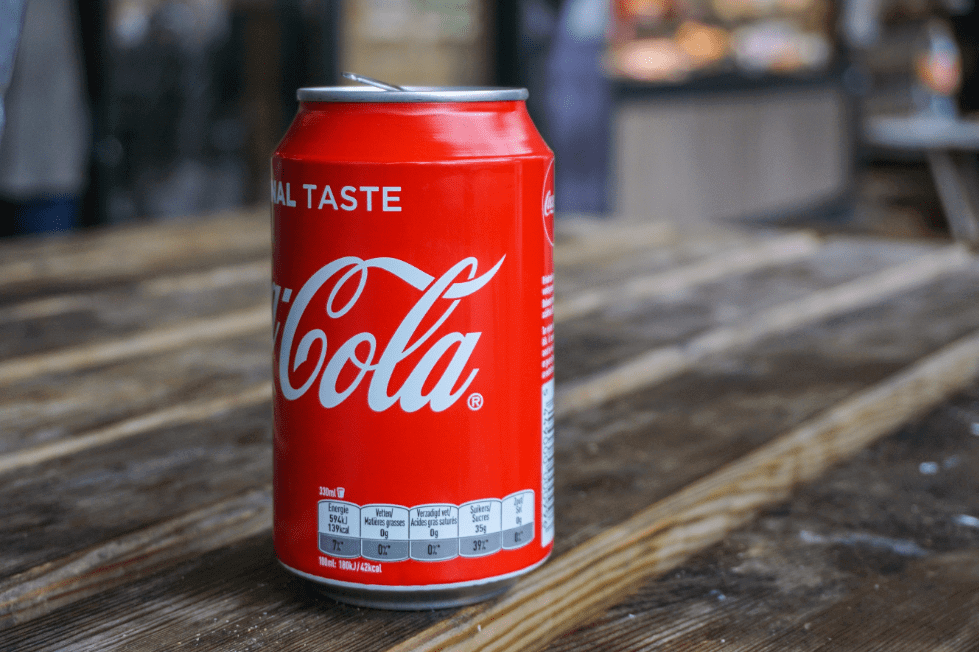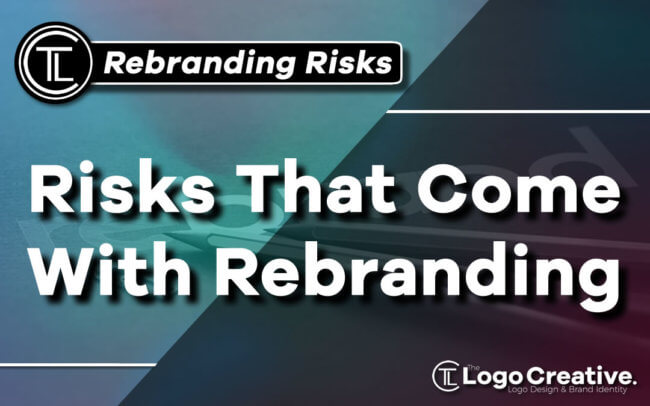Creating a strong brand takes time, and sometimes you need to change it along the way. If you’re thinking about rebranding, consider these risks before taking the leap!. In this article we discuss The Risks That Come With Rebranding.
In a world dominated by household name brands, it can be hard to imagine a time when these words were not part of our day to day vocabulary. Instagram, Pinterest and Airbnb are all companies that have launched in the last 15 years, yet their authority and brand strength make them feel as though they have been around for much longer.
Perhaps surprisingly, these platforms weren’t born as we see them now, having each carried out various rebranding or repositioning activities to continuously align themselves with their target audience. The brand journey for each has not been a smooth road.
For Airbnb especially, there have been countless hurdles to jump over, including numerous connections to murders or other criminal activity at accommodations listed on their platform. However, it remains one of the world’s foremost applications for booking both budget and high-class accommodation.
This seemingly non-stick brand identity is far from lucky, as the company continually works on their market positioning to ensure that they are seen as a market leader that can be trusted, and not something to be avoided. This trust, it seems, transcends any potential risk associated with staying at an accommodation listed on their platform.
Table of Contents
Why Should You Rebrand Your Business
There are a number of reasons that you may be thinking about giving your brand a refresh, or you may be helping someone else with their rebranding project. Rebranding should always be carried out with a specific purpose, such as to align yourself with your target audience or to provide longevity for your new brand identity.
For rebranding efforts gone wrong, the best that can be hoped for is that nobody notices. The worst-case scenario is that the company will see a noticeable negative impact on their bottom line, at which point, something needs to change, and quickly! A poor rebranding effort could also wholly sever the ties of loyalty between a customer and a brand, something that is not immediately repairable.
It’s also worth remembering that although we as humans love things that are shiny and new, giving your customers something new doesn’t guarantee that they’ll like it. So having something that people are hungry for is perhaps the most important thing when it comes to rebranding.

Updating an Outdated Brand Image
For brands that have stood the test of time, it could be easy to slip into a comfortable place of just getting by. However, in doing so, your consumers will begin to outgrow your branding and become disconnected with your message. There are only a handful of brands that have retained their market appeal despite keeping old branding, something that is not done easily.
So, in light of this, presenting your brand with a fresh image that encompasses your story and mission is a great way to regain the trust of lost customers.
A rebrand doesn’t always mean changing the logo either, as National Geographic gave their brand a refresh in 2016, incorporating the tagline ‘further’ as their positioning statement. With a shift over the last decade away from their magazine readership, the brand had to take to new platforms to showcase their in-depth storytelling and unrivalled photography. A brand historically associated with print, National Geographic is now a leading force on social platforms such as YouTube and Instagram, allowing them the space to show off their unique and beautiful content to a much wider and diverse audience.

Reaching New Demographics
Do you feel like the brand doesn’t quite speak to the demographics it’s targeting, or are you searching for a new audience altogether? Rebranding can help you tap into an entirely new marketplace of people by truly understanding what that demographic is looking for.
This could also combine with a renewed focus on promoting your brand via social media and increasing your range of audience interaction. You should always be careful when targeting a new demographic, though, as a new business direction could result in alienating your loyal and profitable customers.
Outgrowing Previous Business Objectives
For businesses that have seen a lot of success, it’s possible that the current branding, story and mission doesn’t align with their marketplace performance. While a particular business is successful and growing, the management hardly want something else added to their plate such as a rebranding project.
However, if a refresh of branding is perpetually ignored, it could lead to a ceiling being placed over the potential success of a business. After all, do you think Instagram would be half as popular now if they had kept their original branding?

If your business is achieving bigger and better things that were previously thought impossible, you may need to consider the possibility of injecting a new lease of life into the brand.
Airbnb is a great example of this, as their initial branding was intended as a stopgap, before the ‘real thing’. In an interview with their design partner Design Studio, Brian Chesky, Airbnb CEO, talks about how the “business and the community didn’t map to the brand”.
The Risks of Rebranding a Business
Although rebranding may seem like a surefire way to freshen up your brand and attract new customers, unfortunately, it’s never that easy. With Coca-Cola’s attempted rebrand in the 1980s serving as a prime example of how not to do it.

Losing or Alienating Current Customers
If your business is even slightly successful, it’s because people are happy to exchange their money for your product or service. In this way, there is an element of trust that is placed in you and your brand. Carrying out a rebrand, although potentially a gateway to new customers, could end up leaving your loyal ones behind.
Make sure that research and surveys are carried out to minimise any potential for a loss of customer engagement and to ensure that you understand what your customers expect from you. Truly understanding your customers’ requirements is one of the main factors in maintaining business longevity.
An example of this was seen when Tropicana (briefly) rebranded in 2009, launching with a bold new style which displayed a style that was a far cry from their beloved orange-with-straw branding. The new design was almost unrecognisable, with people literally walking past the juice on supermarket shelves mistaking it for another brand entirely. Not only does this demonstrate a poor judgement when it comes to branding, but also in communicating the change to customers.
Disconnect Between Branding and the Business
The words brand and business are often used interchangeably, but in reality, the brand is the idea, and the business is the execution of the idea. When a business approaches a design partner, whether a freelance solo outfit or a large agency, they place trust within them that they understand their business.
When carrying out rebranding activities, the design partner needs to truly understand the business, to get inside their head and understand how they think, feel and react. In essence, to crawl inside the brand and walk around in it.
For a rebrand to be successful, the story behind the design and the messaging from the business need to be in perfect synchronicity. Although designers are experts at design, the business owner is the expert at their business, often creating a disconnect.
In a way, the designer has to become the owner of the business. They should learn to think, feel and react as they would and truly understand their thought process; to get inside the brand.
Allowing Budget for Post-Rebrand Marketing
You’ve got this great new brand, your logo design is super popular with people you’ve shown and the new company website is light years better than the old one. However, in all the excitement, all of your budget has been spent on the rebranding activities, leaving none for telling your customers about it.

This is a common pitfall for smaller companies that are going through their first rebrand as often the emphasis is placed on creating a great new brand, rather than allocating resource to be able to shout about it afterwards.
When mapping out your timeline and budget for rebranding, make sure that you allocate a suitable budget for post-rebrand marketing. This isn’t just about updating your current materials either; you’ll want to start carrying out new marketing operations so that people who weren’t aware of your brand can find out about it.
This could also be a great opportunity to look for new suppliers that can provide better deals or higher quality products for your marketing campaigns. For example, as part of your company’s CSR initiative, you could look to incorporate eco-friendly printing into your strategy to ensure that all printed brand materials have been ethically sourced.
Rebranding is challenging and is never a bumpy road, but hopefully, with this advice, your business will come out the other side even better! Have you ever been involved in the rebrand of a business? Whether you’ve designed a company’s new logo or helped with their marketing, we’d love to hear about your experiences! Drop a comment below and start the discussion!
We hope you have enjoyed this article about The Risks That Come With Rebranding, and be sure to leave some love in the comments below.
Useful Links & Great Deals
- The Equipment We Use & Recommend
- Quality Design Bundles
- Get 2 Months free Skillshare
- Get an Exclusive 20% off Logo Package Express
- Learn Logo Design Online
Author Bio
James is a writer based in the South West of England and creates insightful content on the topics of marketing, branding and design. He has a fascination with the role design plays in the modern world and truly appreciates a great colour scheme.


